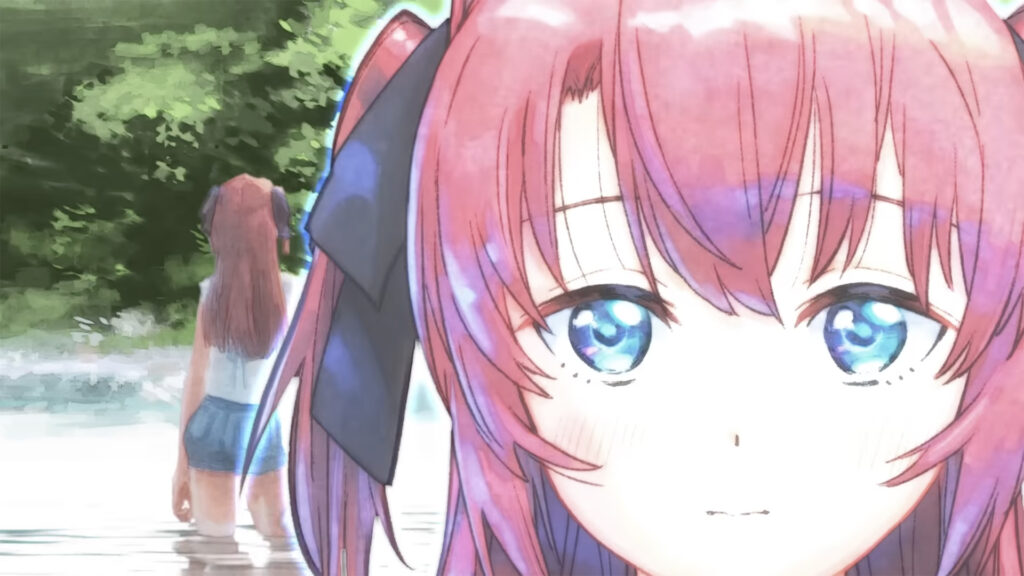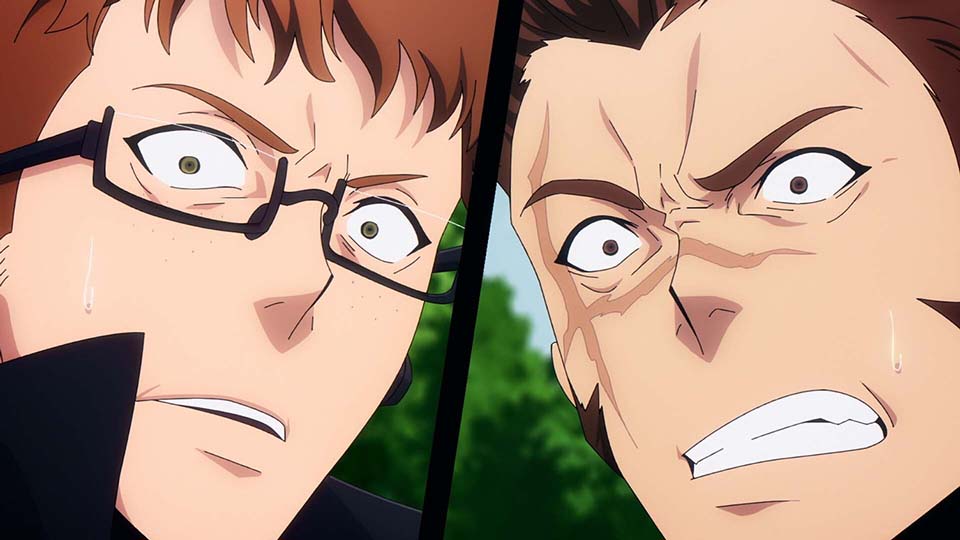Deep under the cliffs of the Red Line, the Straw Hat Pirates arrive at the long-awaited Fish-Man Island, home of fish men, mermaids, and all manner of undersea creatures. With their journey to the island having been delayed by trouble at Sabaody, the entirety of Luffy’s charge from Impel Down to Marineford, and two whole years of training for the New World, both Straw Hats and audience alike surged forward spoiling for action, ready to reveal their new powers against whatever evil might surface. But what they found was unlike anything they’d expected — unlike anything in One Piece altogether, quite frankly. For there was no single foe waiting to be vanquished under the waves; instead, they found themselves entwined in a story of cultural prejudice and resentment, of what we pass on and what we leave behind, and how those unlike each other could ever learn to coexist. RELATED: One Piece Quiz: 25 Years in 25 Questions Fish-Man Island is perhaps One Piece ’s most thematically ambitious arc, weaving together generations of trauma in order to explore the grand project of revolutionizing society, not through violence, but through the hard, unceasing work of changing hearts and minds. Though the Straw Hats are greeted as welcome curiosities by the young locals, they soon discover others are far less accommodating, and when it comes to actually reaching out to the humans through a blood donation, tempers flare further. There is a history of suffering embedded in the coral of this island; while their own ability to inherit the genes and appearance of distant ancestors inherently teaches them the futility of qualifying beings by race, their experience with the human slavers above has shown them this is far from a universal sentiment. How can these humans speak of getting along when everything history has taught them demands not just caution, but absolute distrust for any human being? The fishmen are not wrong to feel this way; in fact, very few characters in this arc are truly wrong, rather than steered to either positive or negative ends by the circumstances and mentors who shaped them. We are all products of our experiences, and we all therefore embrace the possibility for personal reinvention — a hope first embodied by the fishman Hachi, one-time Arlong pirate and jailer of Nami, who the Straw Hats encounter in his new guise as a traveling takoyaki salesman. What Hachi contributed in doing to Nami was unforgivable; but as we learn from Hachi himself, what the humans did to him was also unforgivable, branding him as a slave and treating him like a pack animal. All of these figures are Hachi — the young boy gazing in wonder at the lights of Sabaody, the man taught to hate by humanity’s worst instincts, the jaded soldier of vengeance, and the repentant cook just hoping to do right by his friends. The hurt he caused came from the most earnest possible motivation, and his attempts at reconciliation are equally sincere, but how much does any of that do for Nami, the girl he terrorized in the fulfillment of his resentment? Our ability to stoke anger and inflict suffering is far greater than our ability to mend; as Hachi himself admits, “the wounds we caused will never heal, no matter how much you apologize.” They are a permanent psyche-shaping scar, a tattoo even more permanent than the marks of slavery placed on Hachi and Nami alike. Hachi is not the only character to embody this cycle of initial hope, hard-earned resentment, and eventual striving toward exorcising your hateful demons. Nami demonstrates the same intractability of personal trauma in turn, reflecting that “I’ll never pity Arlong, no matter how long I live,” even as she chooses to forgive Jimbei for his role in her enslavement. Jimbei has his own reasons for hating the humans, and the island’s royal family suffers greatly both at the hands of humans and in their attempts to mend fences with people who have offered them nothing but cruelty. And perhaps no one embodies both the power and limits of forgiveness than Fisher Tiger, one-time slave turned freedom fighter, who gathers former slaves and revolutionaries alike under the liberatory banner of the Sun Pirates. RELATED: One Piece's Shanks Became Such a Huge Character With So Little Screentime The brand of the Sun Pirates carries a duel meaning; not only does it embody the great hope of the fishmen, that they might live under the same bright sun as the creatures of the surface, but it also conceals the brands of any former slaves, offering a promise of equality and perhaps even absolution, the hope that those branded by injustice might become more than a vehicle for their anger. And yet, as courageous and magnanimous as he is, Fisher Tiger is not so strong that he can forgive the wrongs inflicted upon him. Whatever the human slavers did to Fisher Tiger is beyond One Piece ’s tonal limits; the story can only gesture sideways at the horrors of his early journeys, even as he exclaims that “we’re not trying to get revenge for hundreds of years of oppression. The Sun Pirates are about liberation and freedom!” His words are brave, but his feelings are clouded; while the fishmen’s Queen Otohime seeks genuine peace, he charts a middle ground of violent liberation, all while wondering if she sees any difference between him and genuinely brutal, vengeance-seeking lost souls like Arlong. “What I fear most is the demon inside me,” he admits, struggling with all his might to let his high-minded philosophy overcome the resentment born of lived experience. For a time, this dream seems just within reach. In the fellow freed slave of the young human Koala, Fisher Tiger finds a beacon of hope: a girl who is terrified of being discarded and equally frightened of the fishmen, but who nonetheless learns to love and trust them. The bond of Fisher Tiger and Koala represents the brightest hope of this arc, the hope that, so long as you don’t lose your will to live, love and kindness can eventually reshape you just as suffering can. Koala is ferried home free of resentment, having been changed positively by her time accompanying the Sun Pirates and ready to carry that trust into a brighter future. RELATED: A Second Ohara And More: The Ancient Echoes of Egghead Her journey is perhaps the truest fulfillment of Fisher Tiger’s ambitions; for at the end of his life, betrayed once again by humanity’s cruelty, he finds his personal wish cannot be fulfilled. Mortally wounded, he denies the human blood that might save him, refusing to mix his own blood with that of his hated oppressors. For all of his rhetoric, he cannot overcome the scars humans inflicted on him. And thus he understands that his purpose must be to let that pain die with him . We are not so strong as to forgive a hundred years of suffering; but we might at least hope to let that anger die with us, and let the future be decided by those with open hearts and minds. In Fisher Tiger’s final moments, One Piece acknowledges that the cruelty of mankind can warp us for good, that we cannot be expected to forgive all trespasses, and that ultimately, the scars, tattoos, and blood ties that bind us are stronger than our better natures; strong enough that only letting them pass into memory might provoke a brighter future. Fisher Tiger’s young friend Koala embodies this hope, having been young enough to grow beyond her trauma and open-minded enough to see the good in her strange compatriots. Hachi, too, eventually comes to embody a self-sacrificing hope for peace, willing at both Sabaody and Fish-Man Island to martyr himself that the people he loves might live without fear or resentment. But for others, living by this principle is not so easy. The revelation of Arlong’s history shifts his tale to something of a tragedy; though he was the bridge between the Sun Pirates and the later, resentment-driven Fishman Pirates, he was also an ally of Fisher Tiger and stalwart freedom fighter, one of those many starry-eyed children who, like Camie and Hachi, only wished for the simple pleasures of the surface world. But hatred, even righteous hatred, changes us; he might once have been a sincere liberator, but his legacy is the tattoo on Nami’s arm and the hate he inculcated in the next generation. Alongside Fisher Tiger, Fish-Man Island’s Queen Otohime serves as the arc’s second paragon of social progress, fighting tirelessly to arrive at a peaceful solution, to let her people at last reach the sunlight. Her tale of diplomacy and petitioning the people is quite different from One Piece ’s usual fare; similarly to the complexity of cultural resentment itself, the work of actively changing public opinion is presented in all its unglamorous, often hopeless reality. But at the same time, her physically frail body emphasizes that you don’t need Luffy-style strength to be brave like this, to hope for a better world, to care deeply about others. Even as her light is snuffed out in one more painful demonstration of this world’s intractable prejudice, she embodies the same hope as Fisher Tiger, saying “whoever the culprit is, don’t hate them for my sake. Don’t let anger or hatred get the better of you.” RELATED: Which One Piece Story Arc Are You? Through these cycles of hard-earned prejudice filtering through society, One Piece successfully frames cultural resentment as the most implacable foe the Straw Hats have ever faced, a force so strong it cannot be eradicated, only forgotten. It even complicates the Straw Hats’ ability to simply fight their enemies — for even with the best of intentions, one race’s expression of power against another cannot be separated from that power’s history, as Jimbei frantically explains. The long-suffering people of Fish-Man Island have every reason to distrust the salvation of humans; thus it is only the children, unbound by their parents’ experiences, who can boldly declare “if this is the end of our world, then let Straw Hat Luffy destroy it. Let something better be born.” Given this central focus on the intractability and inheritability of prejudice, there could be no better villain for Fish-Man Island than the vicious Hody Jones. As the crown prince Fukaboshi of the island declares in astonishment, “his hate has no substance.” He is an avatar of pure inherited resentment, with no claim to grievance of his own, just a secondhand prejudice against everyone Arlong taught him to despise. Such a hate, unmoored from any specific injustice, can actually be even more pure and animating than a grounded resentment, because such a hate is no longer redressing a wrong, it is destroying an enemy you have framed as categorically destable. It is little surprise that Hody is just as capable of hating his own fishman compatriots as the humans, or even of destroying his own body in pursuit of vengeance; when your hatred has no source but the sheer, inherited prejudice itself, it also has no boundaries, no limits to what it might consume. “The hatred of the dead belongs to the dead,” Fukaboshi states at his mother’s funeral. “So these grudges and resentments, they are an illusion of the living.” A bitter yet optimistic framing, one in keeping with the many things he couldn’t see — the righteous hatred fostering in the abandoned orphanage of the Fishman District, the hierarchies present even in fishman society, the inability of his own father to carry on his mother’s will. We will always have reasons to resent each other, and the project of overcoming these hatreds and seeking a brighter collective future is explicitly the work of generations. Yet as truly as the tattoos of hatred might mark our skin, so too does a shared blood flow beneath, a truth of common nature that, once denied by Fisher Tiger, is ultimately fulfilled through the alliance of Luffy and Jimbei. At our basest level, we are fundamentally alike; the same blood runs through all of us, and if we can learn to embrace that commonality, we will all be stronger for it. RELATED: Every One Piece Pirate Crew in the Anime So Far Toei was correct to reprise the iconic “We Go!” for this arc’s revival, even if I must admit a preference for the original recording. That final, almost gasping rush to the chorus, when the singer’s voice seems near to breaking with the intensity of his feelings, has long stuck with me, and is something I’ll always associate with Fish-Man Island and its people's quest for freedom. Perhaps our ability to resent is greater than our ability to forgive, or perhaps the atrocities we are capable of don’t deserve forgiveness at all. But regardless, we must strive forward, must bury our hatreds as we can, must raise our children to love without condition and always seek kindness. We must choose carefully what we pass on, and sometimes smile through the pain; for just as a true grievance can spawn an insubstantial hatred, so can a false smile beget an earnest vow of friendship. We may not reach the surface, but the sunrise is close; if we don’t live to see it, at least we must ensure our children might laugh in the sun.


